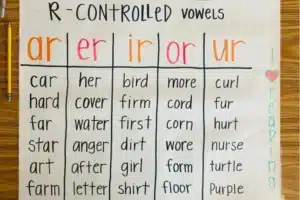
Source: plexusnc
ASD or Autism Spectrum Disorder refers to a neurological disorder that affects the interpersonal skills of any individual, leading to social interaction challenges. ASD is a disorder resulting from certain genetic or environmental factors. When the ASD symptoms are identified at an early stage, it helps to start the interventions in the form of therapy treatments and exclusive learning methods designed using differentiated instruction at an early stage.
ASD symptoms start appearing at around 2 to 3 years, when the child might show noticeable symptoms such as repetitive behaviors, restricted eye contact, and delayed speech, to name a few.
Recognizing these symptoms can be a big advantage for parents, teachers, caregivers, and other professionals to be well-prepared in handling the diverse needs of children and devising ways to help them feel at ease in a regular classroom.
Early ASD Symptoms in Babies and Newborns?
Identifying initial ASD symptoms in babies and newborns can be difficult, particularly since every kid develops at their step. However, certain signs may suggest a kid is showing initial signs of Autism Spectrum Disorder.
Here are some early ASD symptoms to check out for in babies and newborns:
Limited eye contact
Babies may avoid looking at people’s faces or not respond to a smile with a smile.
Lack of response to name
Around 6 months or older, many babies start to identify and respond to their names. A lack of this response can be an early sign.
Delayed social smiling
Most babies begin to smile socially by 6 to 8 weeks. If a baby hardly smiles or does not smile back to others, it may be a risk.
Minimal babbling or cooing
By 6 months, most babies make a variety of sounds. Limited vocal activity or unusual tone may be an indicator.
Unusual body movements
Repetitive motions such as hand flapping or stiffening arms and legs may appear early.
Limited interest in people
Babies typically show curiosity about others, such as looking at faces or following movements. A lack of interest in social interaction may be a sign.
Does not follow objects visually
Cannot hold eye contact for a longer span, or trying to look away, can be an early symptom.
It is important to remember that not all children who display one or two of these behaviors have ASD.
To download the brochure of the SEN Course, Click Here!
For more details on the SEN Course Call/WhatsApp at +919321024137 / +919869866277

At what age do ASD Symptoms Start?
A formal assessment of ASD can be done only once a child is 5 to 6 years old. ASD Symptoms start appearing as early as 12 months, when the child does not display any signs of social interaction, that also reflects in their poor communication skills. Every child is unique and therefore the signs of autism appear at different age. Some repetitive behaviors such as flapping of hands or a specific action can be a symptom that appears as early as 2 to 3 years.
Clear understanding of the signs helps teachers, parents and therapists is extremely helpful as the necessary steps can be taken to prevent any further damage.
Here’s a general idea of when ASD symptoms might start to appear:
Before 12 months
Some babies may show initial signs like avoiding eye contact, limited social smiling, or not responding to their name.
By 18 months
Lack of speech, minimal gestures (like pointing or waving), and reduced interest in people may become more noticeable.
By 24 months
Children who are not speaking, show little interest in playing with others, or display repetitive behaviors may raise concerns.
After 2 years
In some cases, children may develop typical skills but then lose them—this is called regression. Loss of words or social interest can be an early sign of ASD.
ASD is also called as a Spectrum disorder which implies that at times, we cannot clearly identify any child as autistic as the symptoms can be identified at a later age.
But to be completely sure about your child’s development one must be in constant touch of a certified professional monitoring the child’s progress periodically.
How to Handle an ASD Child?
Handling a child with Autism Spectrum Disorder requires rigorous practical training to be well aware of the ways to help them overcome the struggles that hold them back from achieving their learning goals and being at par with their classmates. Special Educators should have clear understanding of all the essential aspects of ASD and must be extremely empathetic towards autistic children possessing a keen desire to make a positive difference to their lives.
To Handle a child who possesses autism spectrum disorder is a challenging task that can be overwhelming at times but with proper training under a Special Ed Program from an Institute like Vidhyanidhi Education Society (Govt. Regd.) will equip you to take on the roadblocks of any learning disorder.
Some important and proven methods of handling and supporting a child with Autism are listed under:
Create structure and routine.
Autistic children do not like any kind of sudden change in their routines. They feel secured when their day is structured with a proper flow of activities followed by playtime and rest time. This helps to get rid of any unnecessary anxiety or other issues.
Use clear, simple communication.
Do not confuse the child by speaking confusing and complicated statements. Keep your instructions simple and clear that are understood easily.
Celebrate small achievements
Acknowledge the child’s smallest victories and achievements. Praise them amidst their friends and classmates to boost their confidence and lift their morale.
Set clear sensory limits.
Ensure that any excessive sensory stimuli should not be present in the environment of the child that can cause distress.
Give attention to nonverbal signs.
Look out for any distressing body language signals or expressions that the child might be displaying. Learning these signals can improve your connection.
Work with professionals
Maintain a positive and cooperative collaboration network with various parties involved in the child’s overall wellbeing to work together for the child’s betterment.
By adhering to the above listed ways there are high chances of the child being able to cope well in a regular classroom setting, and it will help the child carve a successful path for himself to grow and succeed.

Source: brookings
How to Reduce Chances of Autism?
As far as research suggests autism does not have any defined treatment but as science advances it is evident that some changes in lifestyle during pregnancy can help lessen the chances of autism. While some factors are beyond our control, certain influences are in our hands which must be catered to that promote the overall wellbeing of the mother and child.
Here are some ways that may help reduce the chances of autism as Special Ed Course:
Prenatal care matters
Prenatal care should be compulsorily be followed by expecting mothers by going for regular checkups. These regular check-ups help to keep a proper track of the foetus development and ensuring if there are any complications.
Healthy maternal lifestyle
Avoiding smoking, alcohol, and contact with harmful chemicals during pregnancy can reduce the danger of developmental issues.
Nutrition support
Taking prenatal vitamins, especially those containing folic acid, before and during pregnancy is linked to better outcomes in brain development.
Limit exposure to infections.
Preventing infections during pregnancy and staying up to date with vaccinations can help protect the baby’s brain from potential harm.
Early childhood care
Encouraging an inspiring, responsive, and safe atmosphere during start can support overall developmental health.
In addition to promoting early care, it’s similarly important to have qualified professionals who can work with children showing initial signs of ASD. The Special Ed Course offered by Vidhyanidhi Education Society prepares teachers and caregivers with the right devices to identify, support, and teach children with special needs. Whether you are a parent, teacher, or professional, this Special Ed Course provides valuable methods and visions into working with children who may be on the spectrum.
The Special Ed Course not only create awareness but also supports inclusive practices that can definitely shape a kid’s future. By enrolling in the Special Ed Course, candidate’s get knowledge that can make an important difference in the lives of children with developmental problems.
Join Vidhyanidhi Education Society’s SEN Course Today! Support Growth, Spark Potential, Transform Lives!
To download the brochure of the SEN Course, Click Here!
For more details on the SEN Course Call/WhatsApp at +919321024137 / +919869866277
FAQs
What are Early Warning Signs of ASD?
Absence of eye contact, delayed speech, avoidance of meeting, and repetition of the same action are common early warning signs of ASD in young children.
What is the Biggest Indicator of Autism?
One of the best indicators is difficulty with social interactions, such as forgetting to answer their name or continuously avoiding eye contact.
What Noises do Autistic Babies Make?
Autistic babies may produce fewer sounds, use repetitive sounds, or have a distinctive tone. Vidhyanidhi Education Society trains professionals to spot such signs.



